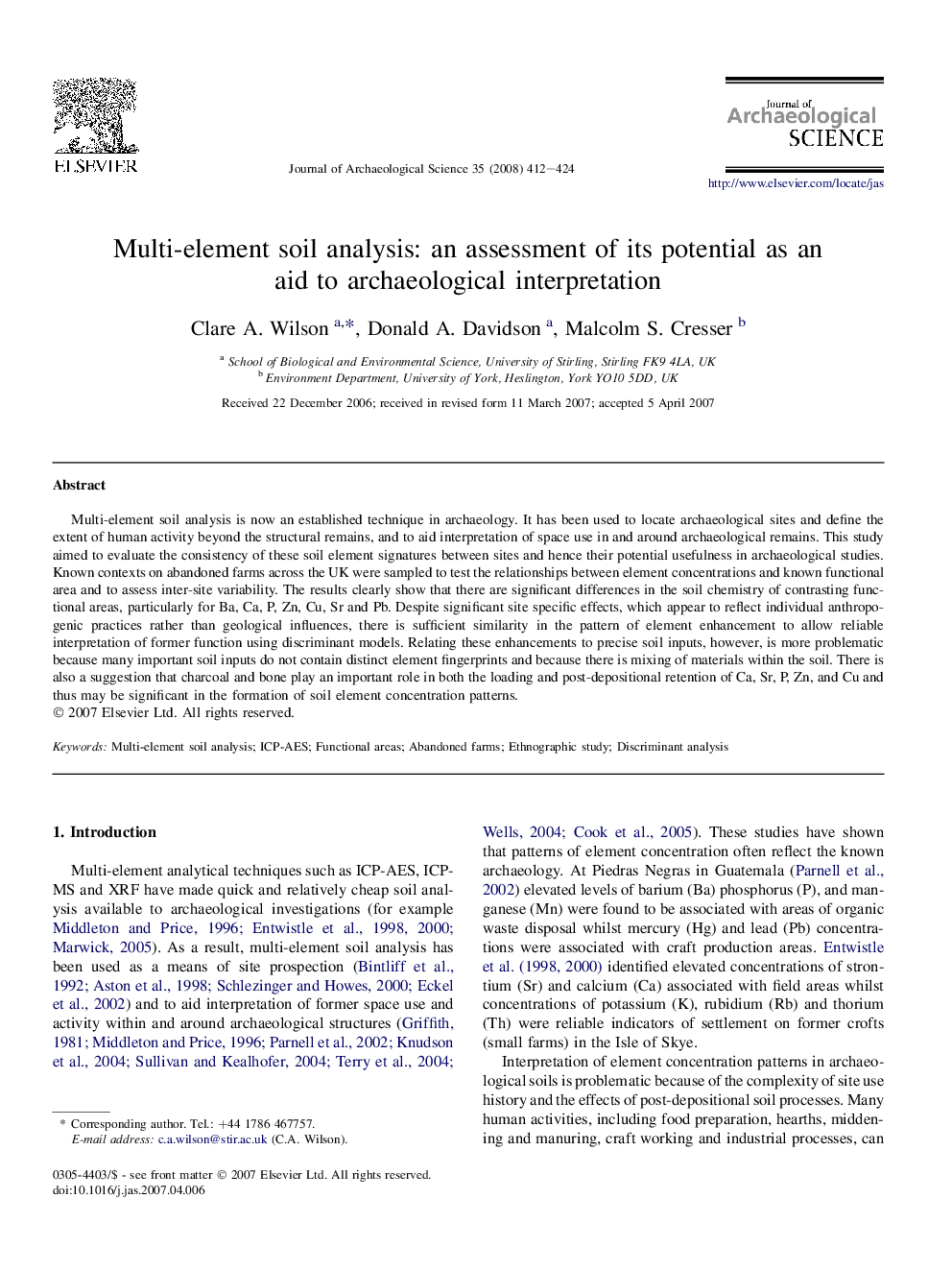| Article ID | Journal | Published Year | Pages | File Type |
|---|---|---|---|---|
| 1036939 | Journal of Archaeological Science | 2008 | 13 Pages |
Multi-element soil analysis is now an established technique in archaeology. It has been used to locate archaeological sites and define the extent of human activity beyond the structural remains, and to aid interpretation of space use in and around archaeological remains. This study aimed to evaluate the consistency of these soil element signatures between sites and hence their potential usefulness in archaeological studies. Known contexts on abandoned farms across the UK were sampled to test the relationships between element concentrations and known functional area and to assess inter-site variability. The results clearly show that there are significant differences in the soil chemistry of contrasting functional areas, particularly for Ba, Ca, P, Zn, Cu, Sr and Pb. Despite significant site specific effects, which appear to reflect individual anthropogenic practices rather than geological influences, there is sufficient similarity in the pattern of element enhancement to allow reliable interpretation of former function using discriminant models. Relating these enhancements to precise soil inputs, however, is more problematic because many important soil inputs do not contain distinct element fingerprints and because there is mixing of materials within the soil. There is also a suggestion that charcoal and bone play an important role in both the loading and post-depositional retention of Ca, Sr, P, Zn, and Cu and thus may be significant in the formation of soil element concentration patterns.
